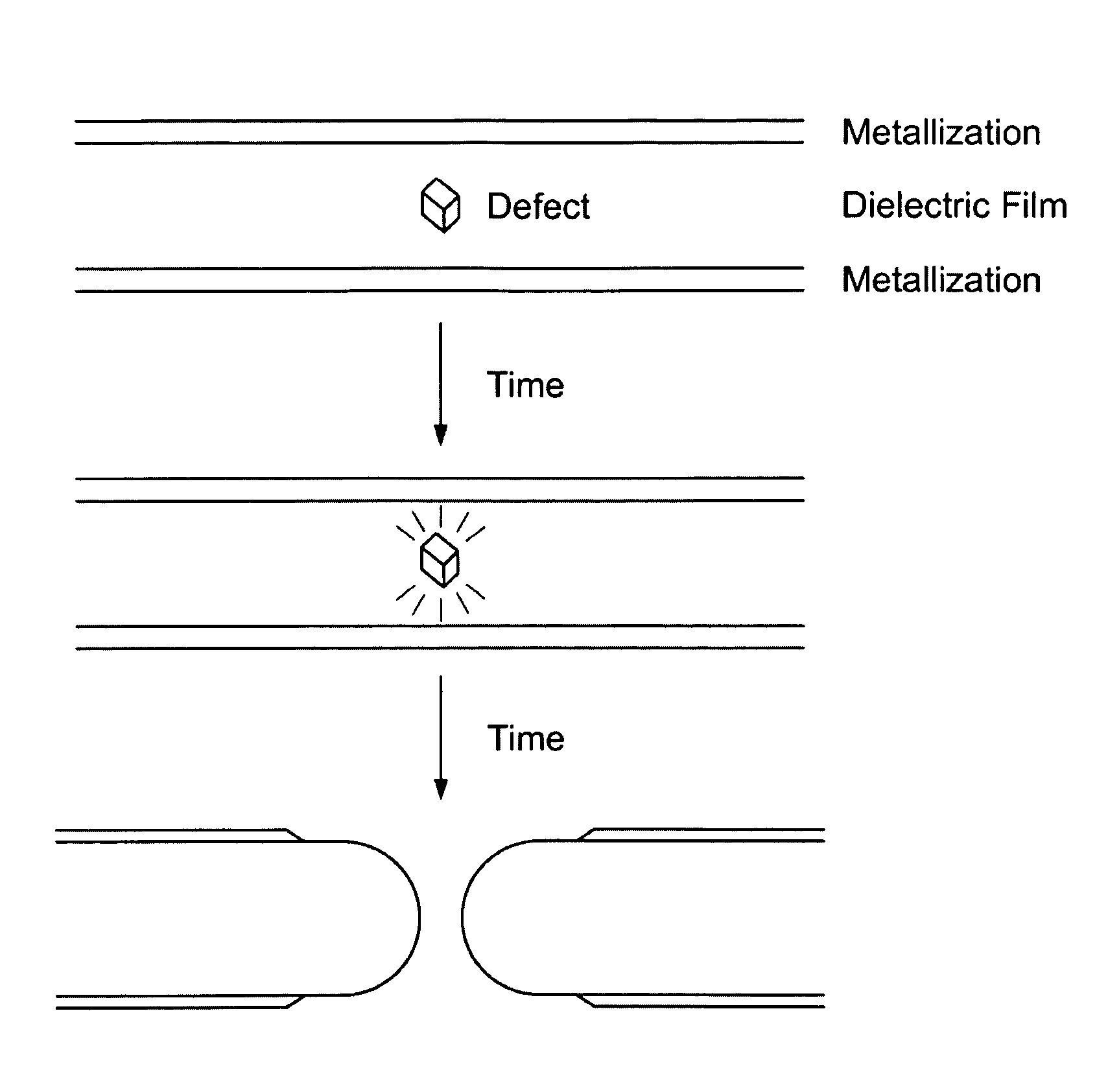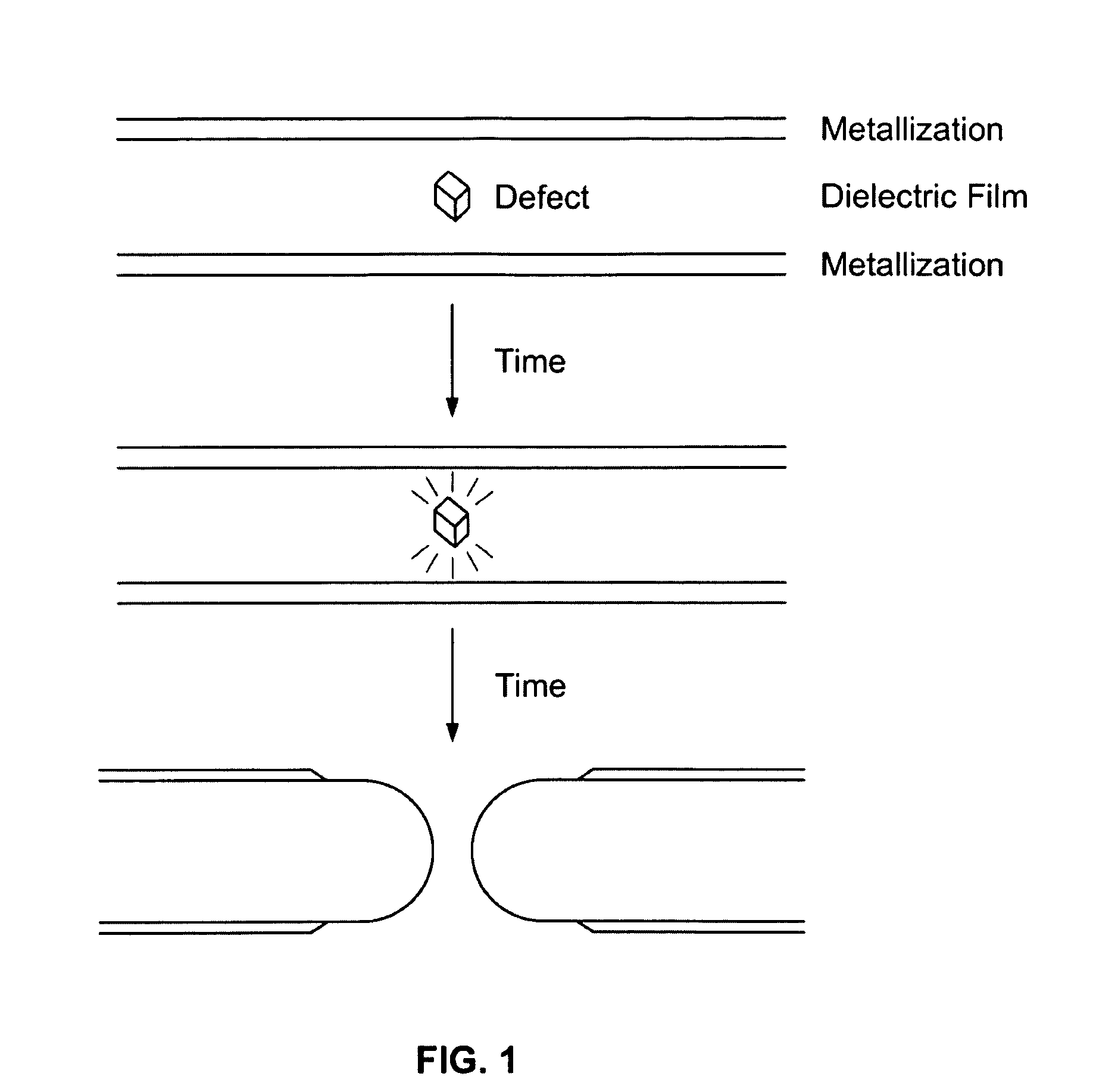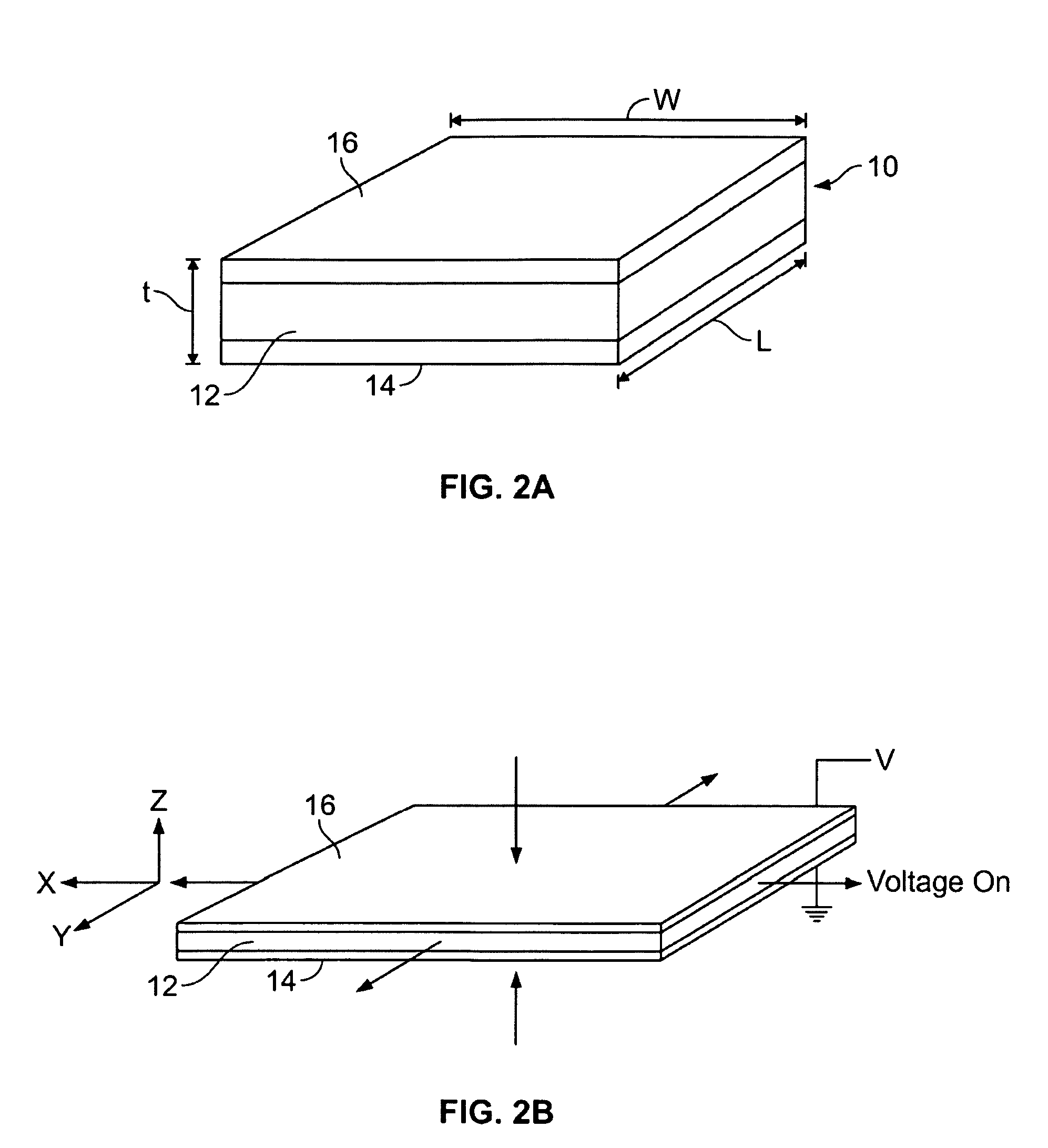Fault-tolerant materials and methods of fabricating the same
a technology of fault tolerance and materials, applied in the direction of variable capacitors, capacitors with electrode area variation, fixed capacitor details, etc., can solve the problems of catastrophic damage to the entire circuit, in-rush current, and the entire capacitor cannot hold or store a charge, so as to achieve high performance characteristics, effectively and efficiently isolate faults, and optimize fault tolerance
- Summary
- Abstract
- Description
- Claims
- Application Information
AI Technical Summary
Benefits of technology
Problems solved by technology
Method used
Image
Examples
Embodiment Construction
Before describing particular embodiments of the materials, devices and systems of the present invention, a discussion of compliant electroactive capacitive structures and their material properties and performance characteristics is provided.
FIGS. 2A and 2B illustrate a capacitive structure in the form of an electroactive film or membrane 10. A thin elastomeric dielectric film or layer 12 is sandwiched between compliant or stretchable electrode plates or layers 14 and 16, thereby forming a capacitive structure or film. The length “l” and width “w” of the dielectric layer, as well as that of the composite structure, are much greater than its thickness “t”. Typically, the dielectric layer has a thickness in range from about 1 μm to about 100 μm, with the total thickness of the structure in the range from about 1 μm to about 10 cm. Additionally, it is desirable if possible to select the elastic modulus, thickness, and / or the microgeometry of electrodes 14, 16 such that the additional st...
PUM
| Property | Measurement | Unit |
|---|---|---|
| average power | aaaaa | aaaaa |
| total thickness | aaaaa | aaaaa |
| total thickness | aaaaa | aaaaa |
Abstract
Description
Claims
Application Information
 Login to View More
Login to View More - R&D
- Intellectual Property
- Life Sciences
- Materials
- Tech Scout
- Unparalleled Data Quality
- Higher Quality Content
- 60% Fewer Hallucinations
Browse by: Latest US Patents, China's latest patents, Technical Efficacy Thesaurus, Application Domain, Technology Topic, Popular Technical Reports.
© 2025 PatSnap. All rights reserved.Legal|Privacy policy|Modern Slavery Act Transparency Statement|Sitemap|About US| Contact US: help@patsnap.com



